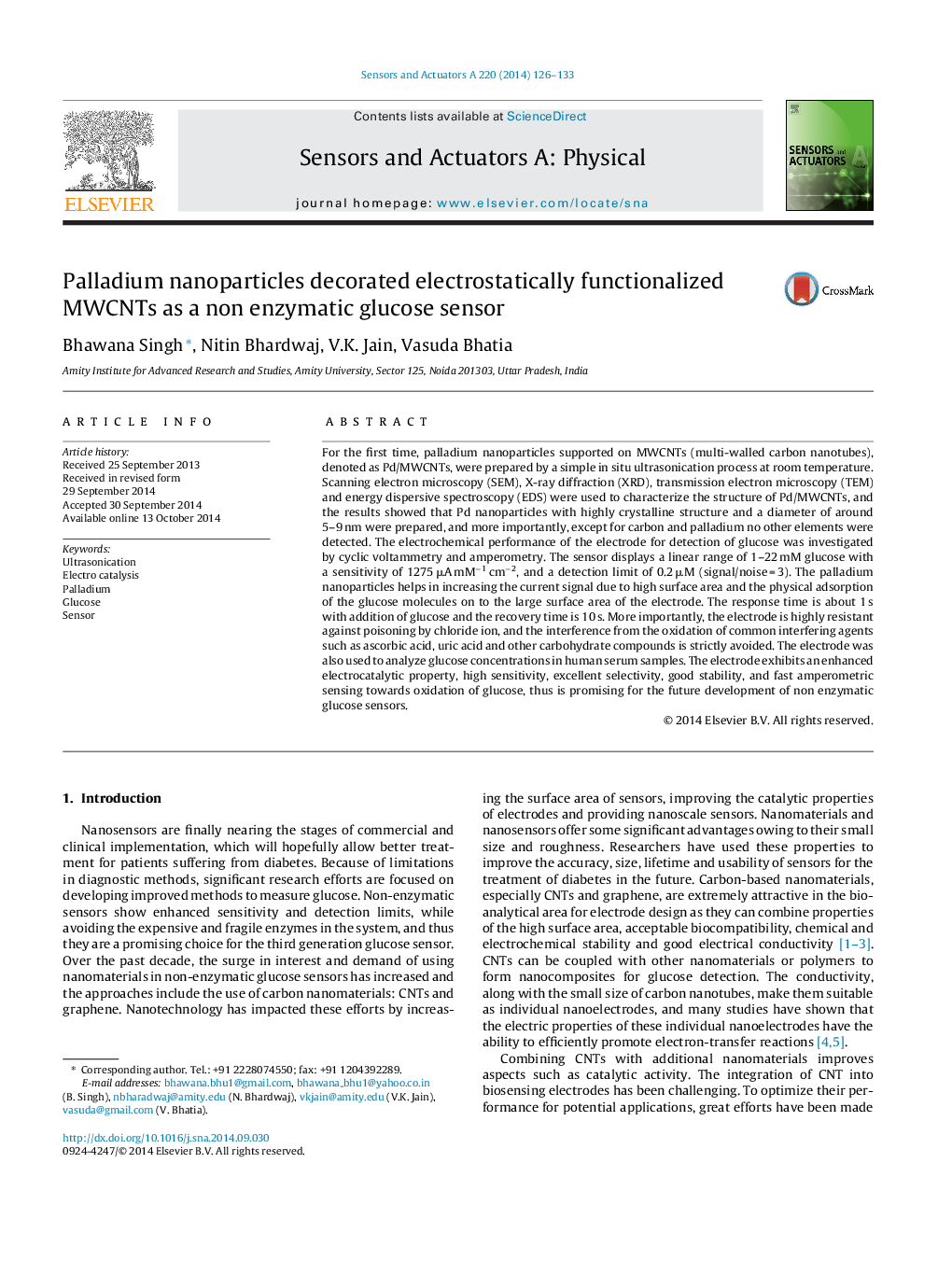| Article ID | Journal | Published Year | Pages | File Type |
|---|---|---|---|---|
| 7136668 | Sensors and Actuators A: Physical | 2014 | 8 Pages |
Abstract
For the first time, palladium nanoparticles supported on MWCNTs (multi-walled carbon nanotubes), denoted as Pd/MWCNTs, were prepared by a simple in situ ultrasonication process at room temperature. Scanning electron microscopy (SEM), X-ray diffraction (XRD), transmission electron microscopy (TEM) and energy dispersive spectroscopy (EDS) were used to characterize the structure of Pd/MWCNTs, and the results showed that Pd nanoparticles with highly crystalline structure and a diameter of around 5-9 nm were prepared, and more importantly, except for carbon and palladium no other elements were detected. The electrochemical performance of the electrode for detection of glucose was investigated by cyclic voltammetry and amperometry. The sensor displays a linear range of 1-22 mM glucose with a sensitivity of 1275 μA mMâ1 cmâ2, and a detection limit of 0.2 μM (signal/noise = 3). The palladium nanoparticles helps in increasing the current signal due to high surface area and the physical adsorption of the glucose molecules on to the large surface area of the electrode. The response time is about 1 s with addition of glucose and the recovery time is 10 s. More importantly, the electrode is highly resistant against poisoning by chloride ion, and the interference from the oxidation of common interfering agents such as ascorbic acid, uric acid and other carbohydrate compounds is strictly avoided. The electrode was also used to analyze glucose concentrations in human serum samples. The electrode exhibits an enhanced electrocatalytic property, high sensitivity, excellent selectivity, good stability, and fast amperometric sensing towards oxidation of glucose, thus is promising for the future development of non enzymatic glucose sensors.
Related Topics
Physical Sciences and Engineering
Chemistry
Electrochemistry
Authors
Bhawana Singh, Nitin Bhardwaj, V.K. Jain, Vasuda Bhatia,
